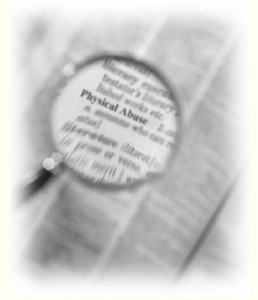What is Physical Abuse?
Posted by PLB Registrar · Leave a Comment
 Each State provides a definition for physical abuse. It is generally defined as “any nonaccidental physical injury to a child,” and can include:
Each State provides a definition for physical abuse. It is generally defined as “any nonaccidental physical injury to a child,” and can include:Punching, beating, kicking, burning, biting, shaking, throwing, slapping, inappropriate restraint, stabbing, choking, hitting (with a hand, stick, strap, or other object), burning, misuse of medications or other action that results in a physical injury (eg. bruises, internal, fractures or death).
Physical abuse may result from extreme discipline or punishment that is inappropriate to the child’s age or condition or a caretaker may experience recurrent lapses in self-control brought on by immaturity, stress, or the use of alcohol/drugs.
It is critical to note that these actions are considered abusive even if there is no intent to hurt a child. While an injury may not be an accident, it also may not be the intent of a child’s caretaker to injure the child.
There are both behavioral and visual signs that may indicate a child is a victim of physical abuse.
The following behaviors by a child may be signs that they are being abused:
- Reports an injury caused by an adult.
- Avoids social contact or seems withdrawn.
- Behaves aggressively.
- Acts out with excessive anger or rage.
- Withdraws in response to physical actions by adults, e.g. hand raising .
It is important to remember that none of these signs alone prove that a child is being mistreated. When several signs appear repeatedly, it may be cause for concern.
From Professional Learning Board’s online continuing education course for teachers: Recognizing and Preventing Child Abuse




